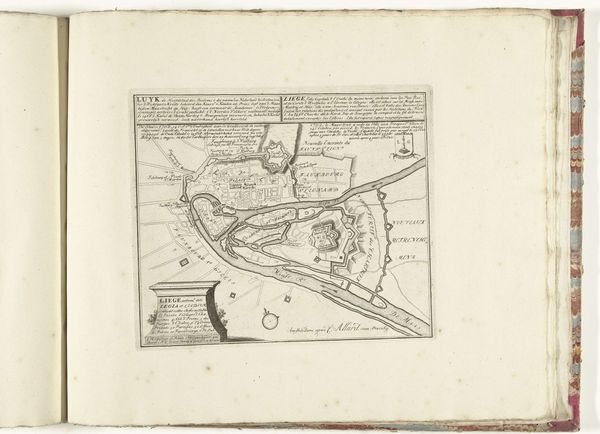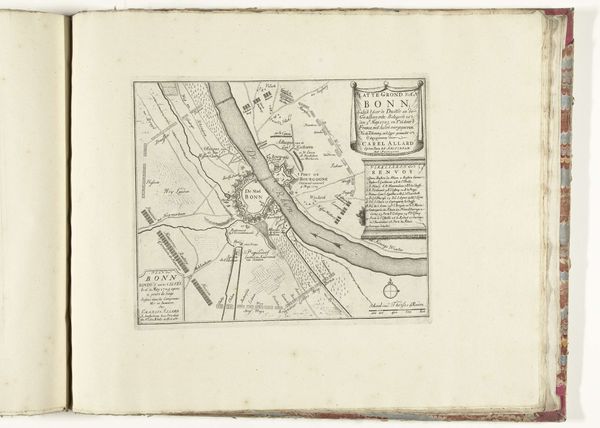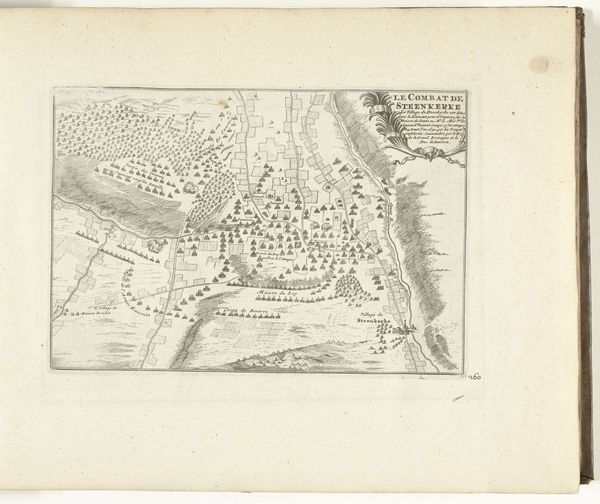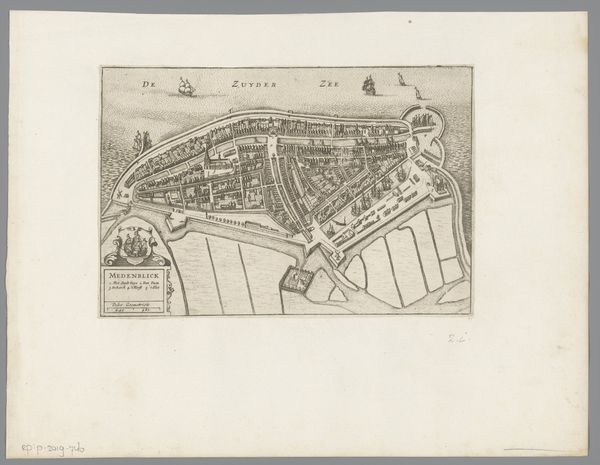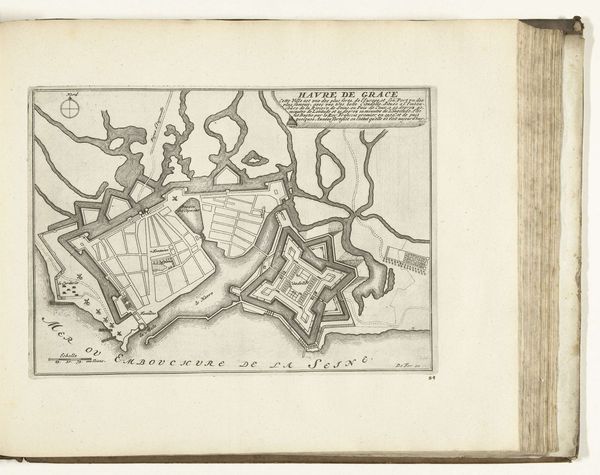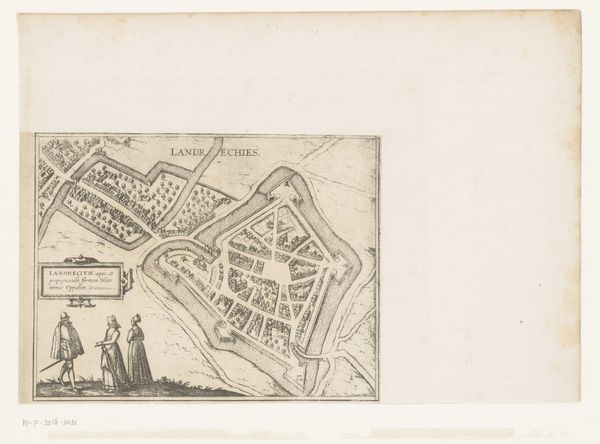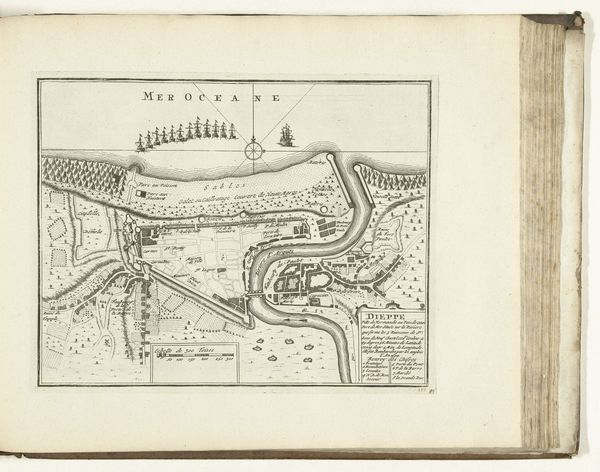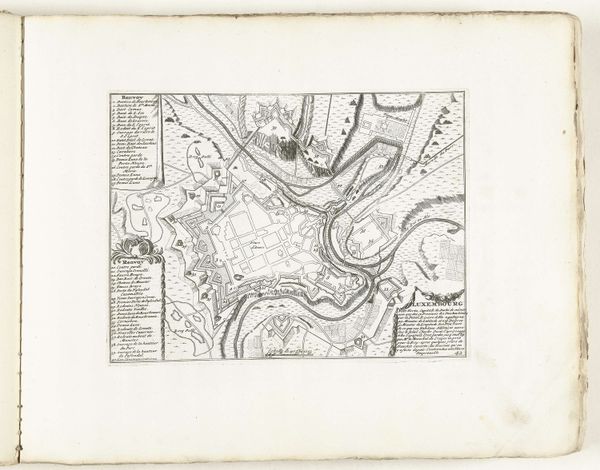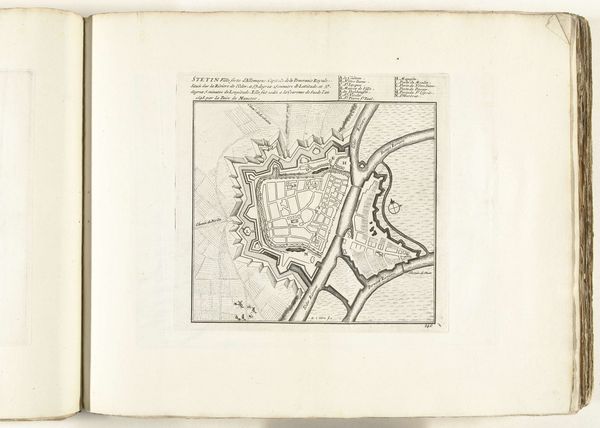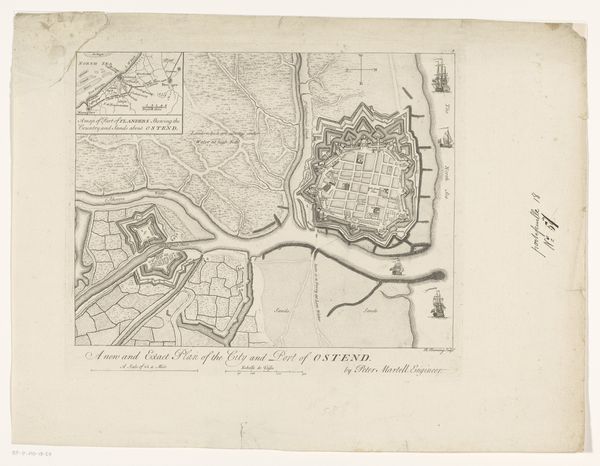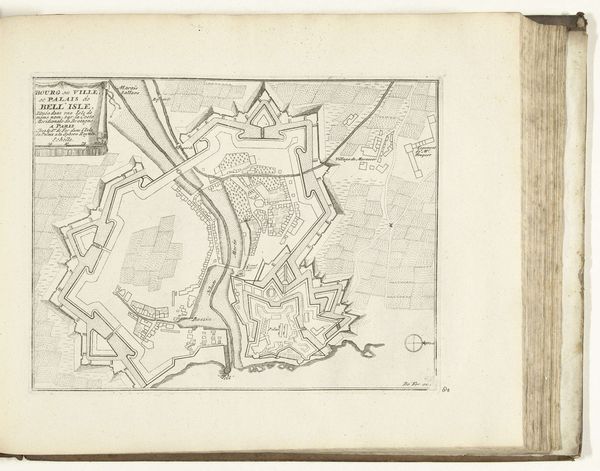
drawing, paper, ink, engraving
#
drawing
#
toned paper
#
baroque
#
mechanical pen drawing
#
pen sketch
#
paper
#
personal sketchbook
#
ink
#
ink drawing experimentation
#
geometric
#
pen-ink sketch
#
line
#
pen work
#
sketchbook drawing
#
cityscape
#
storyboard and sketchbook work
#
sketchbook art
#
engraving
Dimensions: height 183 mm, width 240 mm
Copyright: Rijks Museum: Open Domain
Curator: Here we have "Plattegrond van Luik, 1726," an ink and engraving on paper, currently residing at the Rijksmuseum. My first impression is of the sheer precision, the almost mathematical quality to the linework. It's austere, yet strangely compelling. Editor: Yes, that austere quality speaks volumes, doesn't it? Looking at the city laid bare like this, it brings up questions about power and control. Who commissioned this map, and what was their intention? Was it purely for navigational purposes, or does it serve a more strategic function, perhaps related to military planning and governance? Curator: It's fascinating to consider its utility. The details are quite specific; you can see the infrastructure of daily life rendered in these tiny marks. It's not just a symbolic representation, it speaks to the actual labor and processes of urban life in Liège. The materiality is intriguing; paper, ink, engraving – all materials of documentation and control. Editor: Exactly! Think of the Baroque period; with its rigid social hierarchies, where cartography itself was used as a tool to solidify those power structures. Look at the stark contrast between the orderly city and whatever exists outside its walls. Who is included within that planned space and who is excluded? How are class and social mobility visualized—or, more likely, not visualized—in this urban landscape? Curator: I'm drawn to the craftsmanship inherent in this image, which feels a step removed from fine art. What level of skill went into its creation, and how does it function within the broader ecosystem of 18th-century production and the movement of information? This could be seen as the physical embodiment of a data network. Editor: I agree. The cityscape itself has a cultural significance that can speak across many generations and disciplines, not just historical or geographic interests, but also issues of representation, urban studies, coloniality...It brings forth multiple avenues of questioning how space informs personhood and lived experiences. Curator: Thinking about it further, the material choices – the permanence of the ink, the ability to reproduce engravings – allowed this image to have a wide circulation. This artwork’s intrinsic value lies in what it enables. Editor: Absolutely. Ultimately, this plan reveals more than just a city; it exposes a framework of power and control and access—that even centuries later still manages to ask profound and meaningful questions. Curator: It leaves one to consider the legacy of the mechanisms inherent in it, and its potential effect. Editor: Indeed, and who the mapmakers of today might be.
Comments
No comments
Be the first to comment and join the conversation on the ultimate creative platform.

